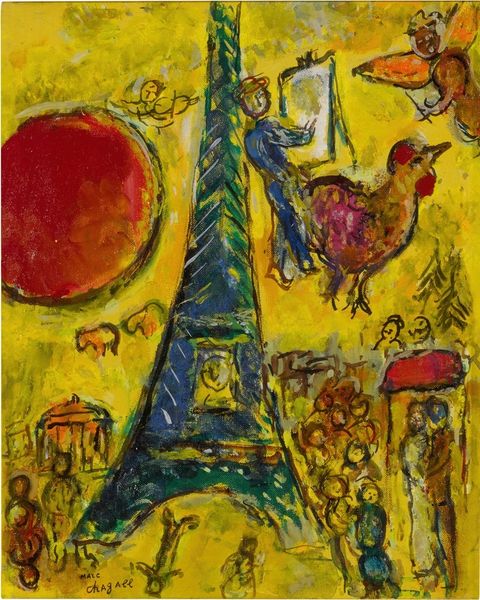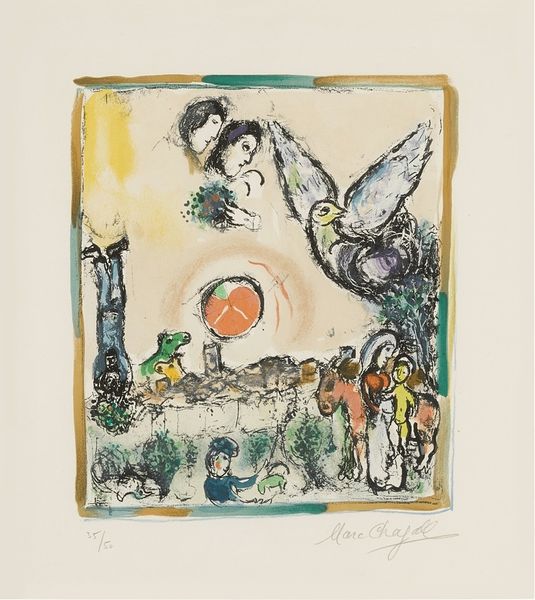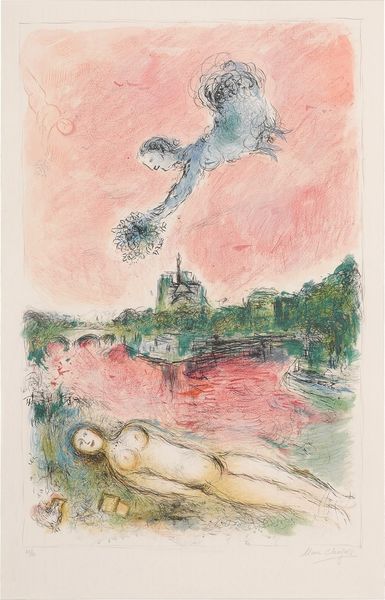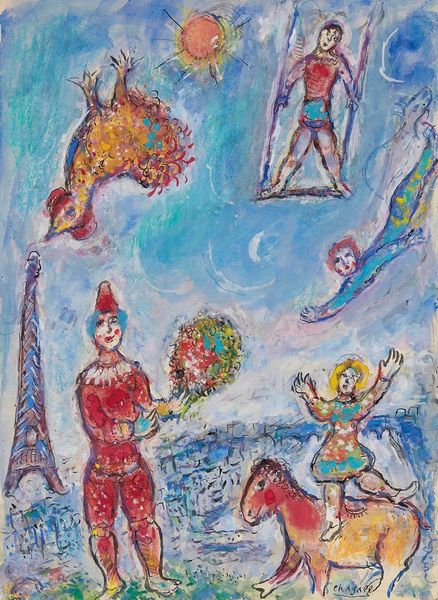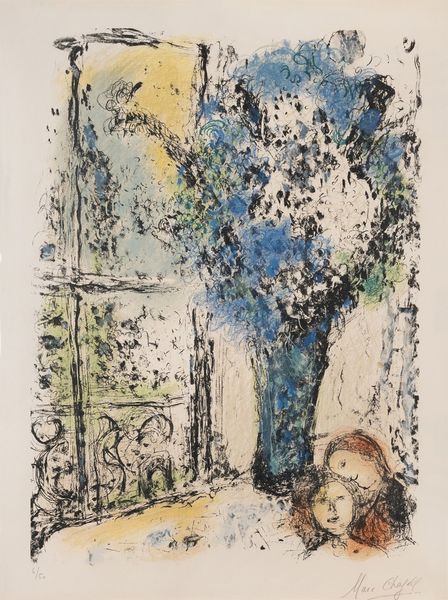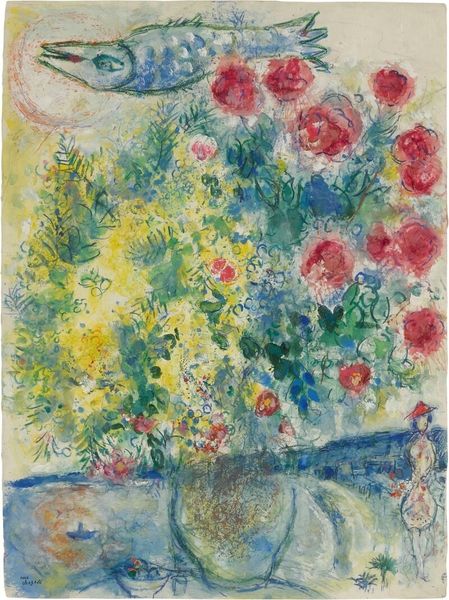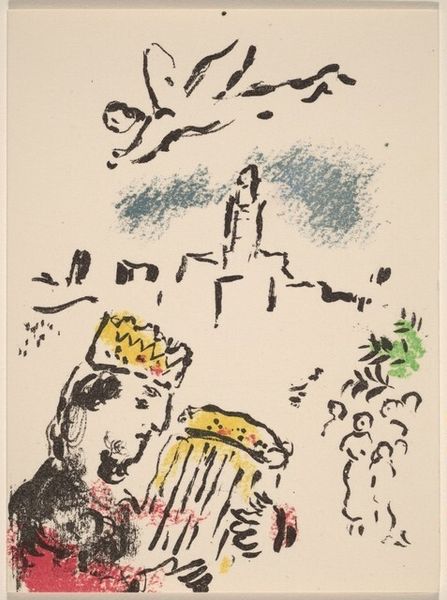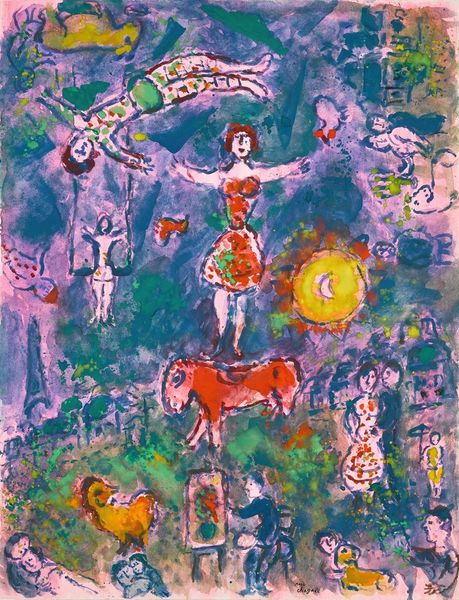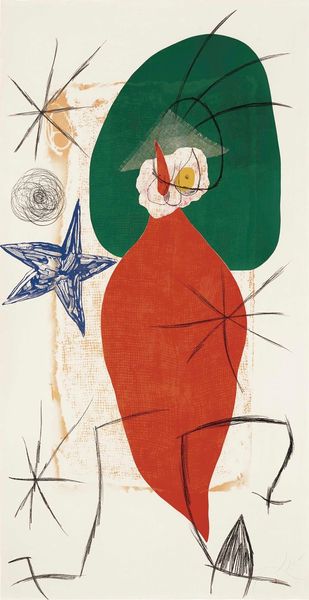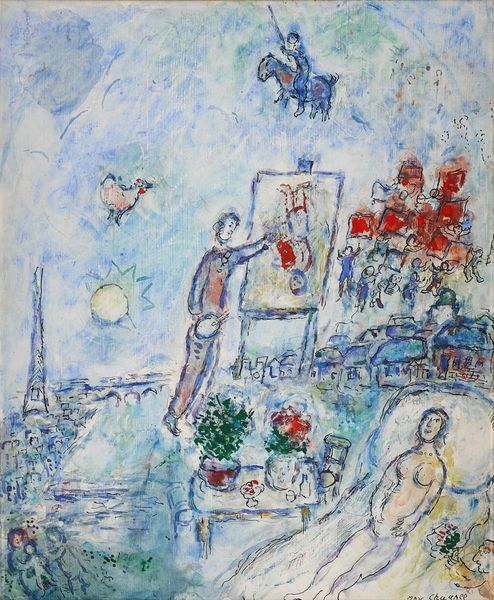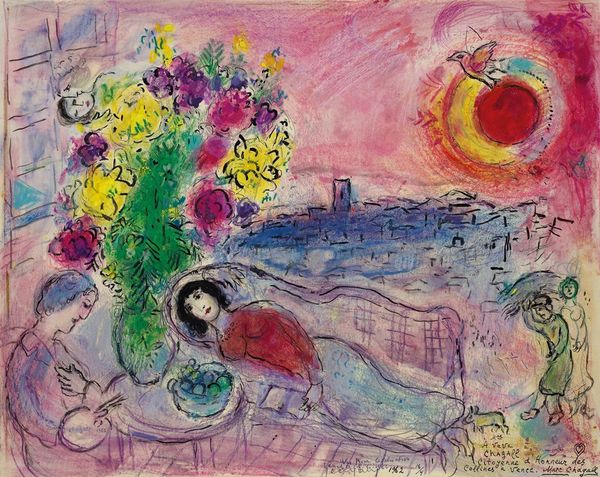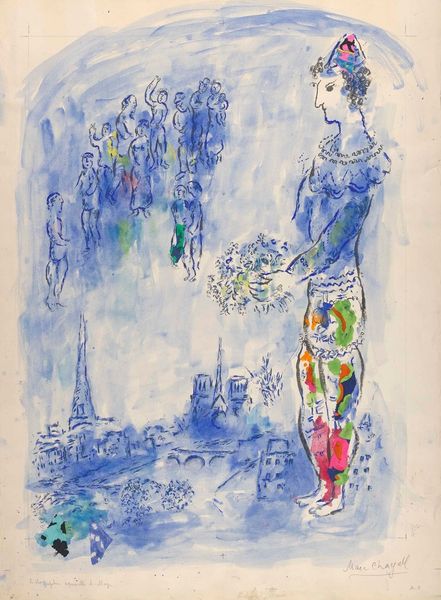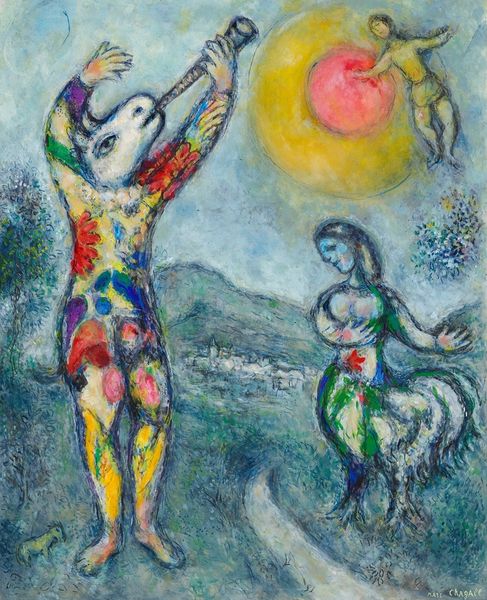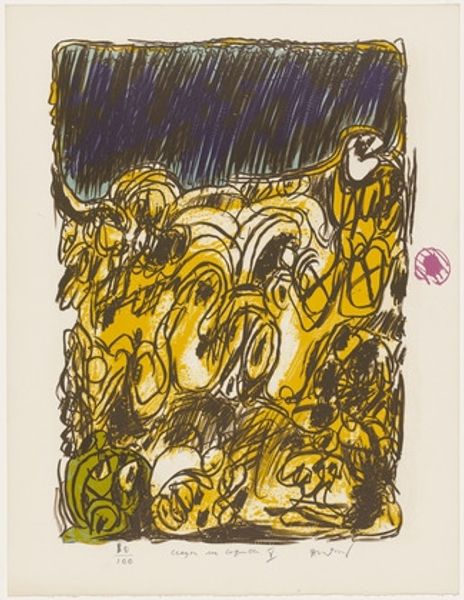
Copyright: Modern Artists: Artvee
Editor: Here we have "Les Amoureux de la Tour Eiffel" or "The Lovers of the Eiffel Tower" created around 1960 by Marc Chagall, a mixed media print. There’s a dreamlike quality to the scene – figures floating near the Eiffel Tower. How do you interpret this work, with all its floating symbolism? Curator: The Eiffel Tower, that wrought iron lattice, soars as a symbol not merely of Paris, but of modernity itself, aspiration, and human ingenuity. Note how it's embraced by a vibrant, almost visceral red orb. What might that fiery sphere evoke for you? Editor: Love, passion… energy? The figures seem connected to it, sheltered by it. Curator: Precisely! Chagall uses the figures, the lovers atop the bird, and the glowing colors, as potent cultural memory and dreamscape alluding to deeper emotional bonds. Birds have appeared across centuries representing freedom, transcendence, and messages from beyond. He’s conflating personal iconography with widely-held, inherited meaning. How does that fusion resonate with you? Editor: It feels intensely personal but simultaneously grand. It's like he's sharing a deeply private moment in a way that makes it universal. Curator: Indeed. Chagall taps into the shared human experience through his surreal lens, and these romantic images become lasting signifiers. In his distinct style, these shared experiences across human culture appear and reappear in new contexts. We recognize the signifiers – and this recognition binds us to shared meaning. Editor: I never thought about it that way, that symbolism could create shared memory like this. It's like he’s speaking a language we all subconsciously understand. Curator: Exactly. He gives visual form to shared cultural memories and universal feelings. The magic of symbols is the power of seeing connections and how their meaning deepens over time.
Comments
No comments
Be the first to comment and join the conversation on the ultimate creative platform.
